Maven的多模塊可以讓項目結構更明確,提高功能的內聚,降低項目的耦合度,真正的體現出分層這一概念。 我們在操作中,要明白為什麼這樣做,要瞭解到更深的層次,這樣,我們就不限於個別軟體了。 話不多說,直入主題: 如果對Maven還不夠熟悉,請看該博客:Maven基礎 整個項目做完之後的結構是這樣的: ...
Maven的多模塊可以讓項目結構更明確,提高功能的內聚,降低項目的耦合度,真正的體現出分層這一概念。
我們在操作中,要明白為什麼這樣做,要瞭解到更深的層次,這樣,我們就不限於個別軟體了。
話不多說,直入主題:
如果對Maven還不夠熟悉,請看該博客:Maven基礎
整個項目做完之後的結構是這樣的:
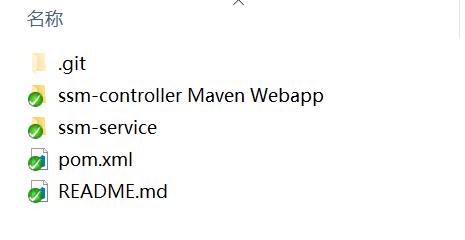

在開始之前我放出這兩張圖是maven多模塊項目做完後的目錄結構,以免大家被eclipse的結構迷惑了。
首先,新建一個maven項目,如圖:

選project,註意是Create a simple project,然後特別註意,root目錄的聚合模塊的packing是pom!!!
完後在該maven項目上新建模塊:

在這裡,service層使用簡單的maven-archetype-quickstart即可,packing使用jar類型,web層則使用maven-archetype-webapp的web項目,packing使用war類型。在這裡,jar類型是為了讓其他項目引用更方便,而war類型是為了能在伺服器部署它。
結構說明
到了這一步,我們已經將這些模塊建好了,接下來我要深入一下項目結構,以及多模塊的原理,然後我們再配置pom文件。
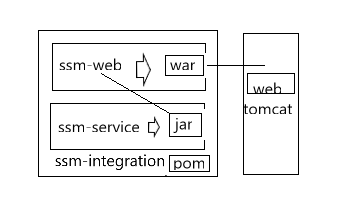
這是一個項目大概運行機制,ssm-integration作為聚合父級項目,就是為了管理其他子項目(模塊),多模塊就是基於聚合父級項目的。子模塊service是對數據處理的模塊,在這裡是ssm框架,那麼它負責完成對資料庫的操作的封裝(大概結構,具體不細說),然後對外暴露一個介面供web模塊調用即可。也就是當web模塊引用了ssm-service.jar之後,供web項目調用的只有你對外暴露的介面,這就真正實現分層。而web模塊,只負責servlet、視圖模型、前端頁面和一些簡單的邏輯,需要時調用ssm-service.jar的介面方法就行了。當對項目進行部署時,只需部署ssm-web即可,因為ssm-integration僅僅負責管理,你可以將它理解為承載著多模塊的大框架,而ssm-service已經打包給ssm-web了(ssm-web裡面已經有ssm-service了)。
pom.xml分析
在這之前,我聲明一下,聚合和繼承是可以分開的,只是大家想方便一下,所以統稱為父項目。
我們開始看pom的配置,首先時父項目的pom.xml(這裡只截取一部分,瞭解方法為重點):
父類pom.xml分析
1 <?xml version="1.0" encoding="UTF-8"?> 2 <project xmlns="http://maven.apache.org/POM/4.0.0" xmlns:xsi="http://www.w3.org/2001/XMLSchema-instance" 3 xsi:schemaLocation="http://maven.apache.org/POM/4.0.0 http://maven.apache.org/xsd/maven-4.0.0.xsd"> 4 <modelVersion>4.0.0</modelVersion> 5 <groupId>cn.zuoyu.ssm</groupId> 6 <artifactId>ssm-integration</artifactId> 7 <version>0.0.1-SNAPSHOT</version> 8 <packaging>pom</packaging> 9 <name>ssm-integration</name> 10 <description>spring&springMVC&mybatis的整合</description> 11 12 <modules> 13 <module>ssm-service</module> 14 <module>ssm-controller Maven Webapp</module> 15 </modules> 16 17 <properties> 18 <project.build.sourceEncoding>UTF-8</project.build.sourceEncoding> 19 <spring.version>4.3.8.RELEASE</spring.version> 20 </properties> 21 22 <build> 23 <pluginManagement> 24 <plugins> 25 <!-- 編譯插件 --> 26 <plugin> 27 <groupId>org.apache.maven.plugins</groupId> 28 <artifactId>maven-compiler-plugin</artifactId> 29 <version>2.3.2</version> 30 <configuration> 31 <source>1.8</source> 32 <target>1.8</target> 33 </configuration> 34 </plugin> 35 36 <!-- 用UTF-8編碼處理資源文件 --> 37 <plugin> 38 <groupId>org.apache.maven.plugins</groupId> 39 <artifactId>maven-resources-plugin</artifactId> 40 <version>2.6</version> 41 <configuration> 42 <encoding>UTF-8</encoding> 43 </configuration> 44 </plugin> 45 </plugins> 46 </pluginManagement> 47 <!-- <resources> 48 <!--資源位置配置--> 49 <resource> 50 <directory>src/main/java</directory> 51 <includes> 52 <include>**/*.xml</include> 53 </includes> 54 </resource> 55 <!--指定資源的位置--> 56 <resource> 57 <directory>src/main/resources</directory> 58 </resource> 59 </resources> --> 60 </build> 61 62 63 <dependencyManagement> 64 <dependencies> 65 <!-- 單元測試 --> 66 <dependency> 67 <groupId>junit</groupId> 68 <artifactId>junit</artifactId> 69 <version>4.12</version> 70 <scope>test</scope> 71 </dependency> 72 <!-- spring核心包 --> 73 <dependency> 74 <groupId>org.springframework</groupId> 75 <artifactId>spring-core</artifactId> 76 <version>${spring.version}</version> 77 </dependency> 78 79 <!-- 掃描用包 --> 80 <dependency> 81 <groupId>org.springframework</groupId> 82 <artifactId>spring-context</artifactId> 83 <version>${spring.version}</version> 84 </dependency> 85 86 <!-- 緩存掃描用包 --> 87 <dependency> 88 <groupId>org.springframework</groupId> 89 <artifactId>spring-context-support</artifactId> 90 <version>${spring.version}</version> 91 </dependency> 92 93 <!-- bean支持 --> 94 <dependency> 95 <groupId>org.springframework</groupId> 96 <artifactId>spring-beans</artifactId> 97 <version>${spring.version}</version> 98 </dependency> 99 </dependencyManagement> 100 </project>
在這裡,<modules>xxx<modules>是將需要管理的模塊放進去,放進去的模塊歸該聚合項目管理。例如<pluginManagement>xxx</pluginManagement>或<dependencyManagement>xxx</dependencyManagement>是父類里獨有的,為的是統一資源包,方便管理。
子類pom.xml分析
看一下子類的代碼,以web模塊為例
1 <?xml version="1.0"?> 2 <project 3 xsi:schemaLocation="http://maven.apache.org/POM/4.0.0 http://maven.apache.org/xsd/maven-4.0.0.xsd" 4 xmlns="http://maven.apache.org/POM/4.0.0" xmlns:xsi="http://www.w3.org/2001/XMLSchema-instance"> 5 <modelVersion>4.0.0</modelVersion> 6 <parent> 7 <groupId>cn.zuoyu.ssm</groupId> 8 <artifactId>ssm-integration</artifactId> 9 <version>0.0.1-SNAPSHOT</version> 10 </parent> 11 <artifactId>ssm-controller</artifactId> 12 <packaging>war</packaging> 13 <name>ssm-controller</name> 14 <url>http://maven.apache.org</url> 15 16 17 <dependencies> 18 19 <dependency> 20 <groupId>junit</groupId> 21 <artifactId>junit</artifactId> 22 </dependency> 23 <!-- springMVC核心包 --> 24 <dependency> 25 <groupId>org.springframework</groupId> 26 <artifactId>spring-webmvc</artifactId> 27 </dependency> 28 29 <!-- jstl支持 --> 30 <dependency> 31 <groupId>jstl</groupId> 32 <artifactId>jstl</artifactId> 33 </dependency> 34 35 <dependency> 36 <groupId>org.apache.taglibs</groupId> 37 <artifactId>taglibs-standard-impl</artifactId> 38 </dependency> 39 40 <dependency> 41 <groupId>org.apache.taglibs</groupId> 42 <artifactId>taglibs-standard-spec</artifactId> 43 </dependency> 44 45 <!-- 對service的依賴 --> 46 <dependency> 47 <groupId>${project.groupId}</groupId> 48 <artifactId>ssm-service</artifactId> 49 <version>${project.version}</version> 50 </dependency> 51 </dependencies> 52 <build> 53 <plugins> 54 <!-- 編譯插件 --> 55 <plugin> 56 <groupId>org.apache.maven.plugins</groupId> 57 <artifactId>maven-compiler-plugin</artifactId> 58 </plugin> 59 60 <!-- 編碼設置 --> 61 <plugin> 62 <groupId>org.apache.maven.plugins</groupId> 63 <artifactId>maven-resources-plugin</artifactId> 64 </plugin> 65 </plugins> 66 <finalName>ssm-controller</finalName> 67 </build> 68 </project>
你會發現多了<parent></parent>標簽,這裡面寫的就是它要繼承的父項目。你還會發現項目沒有聲明groupId和version,因為它已經有父項目了,父項目已經管理了它的來源和版本號。你還會發現plugin插件和dependency依賴沒有聲明version,這就是父項目里寫pluginManagement和dependencyManagement的優點,父項目里的這個如果子項目沒有聲明則不會導入該依賴或插件,如果需要,只需聲明groupId和artifactId即可,方便管理。另外,必須將該項目依賴的其他項目的pack引用過來,不然多模塊就失去了意義,根本運行不起來。
註意:
在maven多模塊項目里,子項目的classpath共用的。
部署:
在IntelliJ IDEA里部署MavenWeb項目和MyEclipse部署是有差異的,MyEclipse要很簡單:
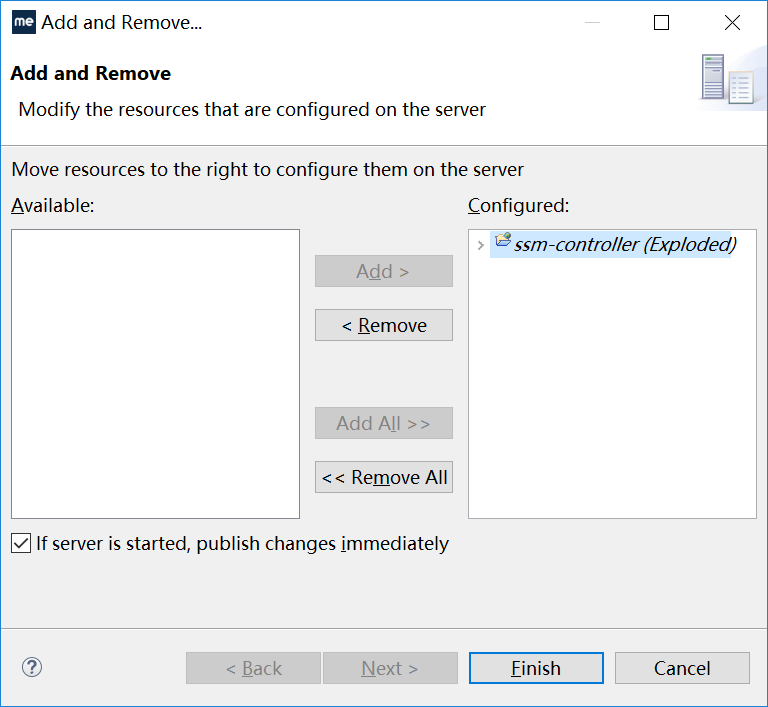
就好了,只部署ssm-web即可。
到了這一步,還差很關鍵的一部,就是在你運行之前,要保證你的maven倉庫有ssm-service,就是你service層的jar包,不然ssm-web根本找不到ssm-service.jar,所以,我們要這樣:
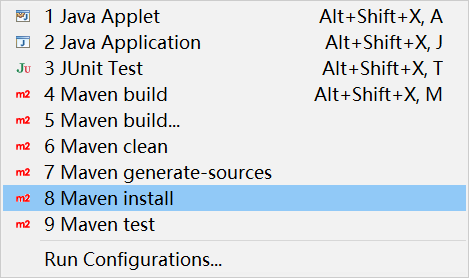
否則無法運行。
然後...
看一下整體結構:
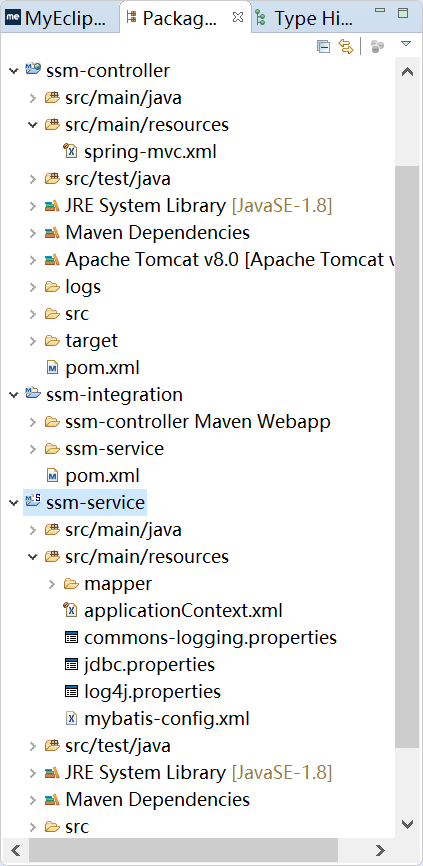
就可以運行了...
若有不對的地方歡迎+感謝評論指出或郵件我 [email protected]
共同進步


